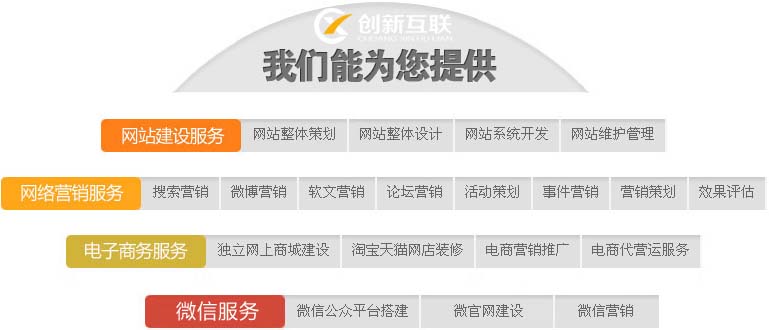on_delete方法如何在Django中使用-创新互联
on_delete方法如何在Django中使用?很多新手对此不是很清楚,为了帮助大家解决这个难题,下面小编将为大家详细讲解,有这方面需求的人可以来学习下,希望你能有所收获。

一、django3.0官方文档介绍:
Many-to-one relationships多对一关系
To define a many-to-one relationship, use django.db.models.ForeignKey. You use it just like any other Field type: by including it as a class attribute of your model.
ForeignKey requires a positional argument: the class to which the model is related.
For example, if a Car model has a Manufacturer – that is, a Manufacturer makes multiple cars but each Car only has one Manufacturer – use the following definitions:
from django.db import models class Manufacturer(models.Model): # ... pass class Car(models.Model): manufacturer = models.ForeignKey(Manufacturer, on_delete=models.CASCADE) # ...
You can also create recursive relationships (an object with a many-to-one relationship to itself) and relationships to models not yet defined; see the model field reference for details.
It's suggested, but not required, that the name of a ForeignKey field (manufacturer in the example above) be the name of the model, lowercase. You can, of course, call the field whatever you want.
常见的使用方式(设置为null)
class ApiList(models.Model): desc = models.CharField(max_length=255, verbose_name="接口描述") keyword = models.CharField(max_length=100, verbose_name="请求关键字") response = models.TextField(verbose_name="响应结果") api = models.ForeignKey(Api, blank=True, null=True, on_delete=models.SET_NULL, verbose_name="所属接口") status = models.IntegerField(default=1, verbose_name="状态") create_at = models.CharField(max_length=20, verbose_name="创建时间") update_at = models.CharField(max_length=20, verbose_name="更新时间")
一对多(ForeignKey)
class ForeignKey(ForeignObject): def __init__(self, to, on_delete, related_name=None, related_query_name=None, limit_choices_to=None, parent_link=False, to_field=None, db_constraint=True, **kwargs): super().__init__(to, on_delete, from_fields=['self'], to_fields=[to_field], **kwargs)
一对一(OneToOneField)
class OneToOneField(ForeignKey): def __init__(self, to, on_delete, to_field=None, **kwargs): kwargs['unique'] = True super().__init__(to, on_delete, to_field=to_field, **kwargs)
从上面外键(ForeignKey)和一对一(OneToOneField)的参数中可以看出,都有on_delete参数,而 django 升级到2.0之后,表与表之间关联的时候,必须要写on_delete参数,否则会报异常:
TypeError: __init__() missing 1 required positional argument: 'on_delete'
因此,整理一下on_delete参数的各个值的含义:
on_delete=None, # 删除关联表中的数据时,当前表与其关联的field的行为
on_delete=models.CASCADE, # 删除关联数据,与之关联也删除
on_delete=models.DO_NOTHING, # 删除关联数据,什么也不做
on_delete=models.PROTECT, # 删除关联数据,引发错误ProtectedError
# models.ForeignKey('关联表', on_delete=models.SET_NULL, blank=True, null=True)
on_delete=models.SET_NULL, # 删除关联数据,与之关联的值设置为null(前提FK字段需要设置为可空,一对一同理)
# models.ForeignKey('关联表', on_delete=models.SET_DEFAULT, default='默认值')
on_delete=models.SET_DEFAULT, # 删除关联数据,与之关联的值设置为默认值(前提FK字段需要设置默认值,一对一同理)
on_delete=models.SET, # 删除关联数据,
a. 与之关联的值设置为指定值,设置:models.SET(值)
b. 与之关联的值设置为可执行对象的返回值,设置:models.SET(可执行对象)多对多(ManyToManyField)
class ManyToManyField(RelatedField): def __init__(self, to, related_name=None, related_query_name=None, limit_choices_to=None, symmetrical=None, through=None, through_fields=None, db_constraint=True, db_table=None, swappable=True, **kwargs): super().__init__(**kwargs)
因为多对多(ManyToManyField)没有 on_delete 参数,所以略过不提.
二、on_delete外键删除方式
CASCADE:级联删除。当Manufacturer对象删除时,它对应的Car对象也会删除。
PROTECT:保护模式,采用该选项,删除时会抛出ProtectedError错误。
SET_NULL:置空模式,删除的时候,外键字段被设置为空,前提就是blank=True, null=True,定义该字段的时候,允许为空。当Manufacturer对象删除时,它对应的Car对象的manufacturer字段会置空,前提是null=True
SET_DEFAULT:置默认值,删除的时候,外键字段设置为默认值,所以定义外键的时候注意加上一个默认值。
SET():自定义一个值,该值当然只能是对应的实体了
看完上述内容是否对您有帮助呢?如果还想对相关知识有进一步的了解或阅读更多相关文章,请关注创新互联行业资讯频道,感谢您对创新互联网站建设公司,的支持。
分享名称:on_delete方法如何在Django中使用-创新互联
转载来源:http://mswzjz.cn/article/dijocg.html